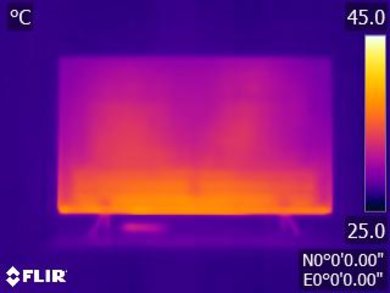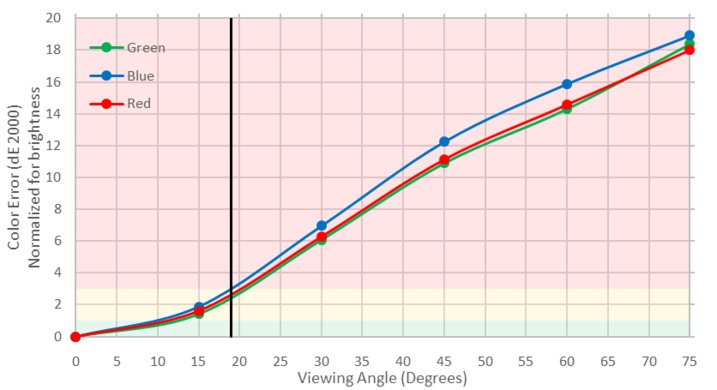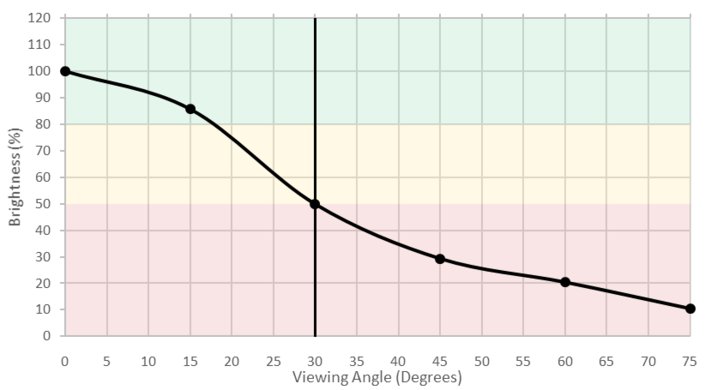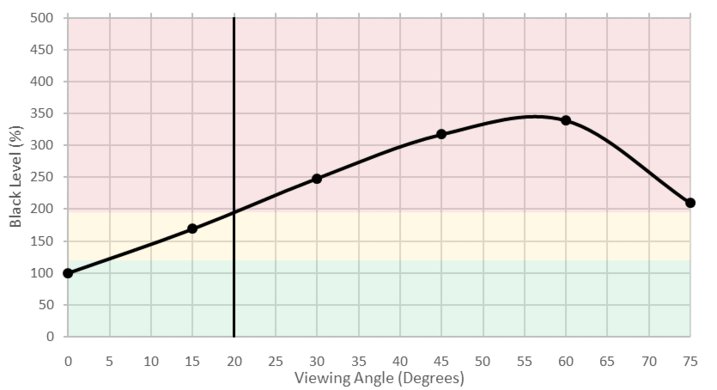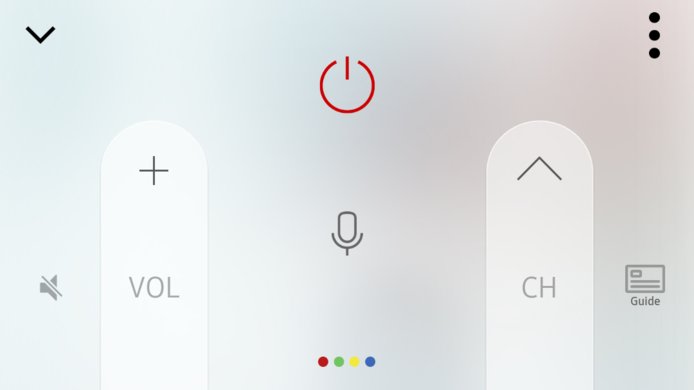The Samsung MU8000 is a capable 4k LED TV that offers good picture quality. Most content will do well on this TV, and it supports modern features such as HDR. Unfortunately, it can't display as many colors as other TVs in its class, and picture quality degrades at an angle.
Our Verdict
Good TV for mixed usage. Good picture quality when viewed from directly in front, but it degrades at an angle. Motion handling is great for sports or gaming.
-
Great blacks and contrast
-
Low input lag
-
Good brightness
-
Mediocre color gamut
-
Image degrades at an angle
Good for watching movies in a dark room. Picture quality is good, but unfortunately local dimming doesn't work well to improve dark scene performance.
Better than average for TV shows in a bright room. Picture quality is good, but degrades at an angle. The TV can get quite bright but unfortunately the reflection handling is worse than ideal. Smart OS works well for casual viewing.
Good sports performance. Motion handling is great, so only a short trail is seen. Picture quality is good but degrades at an angle. Very little dirty screen effect which is good.
Great for gamers. Low input lag at a range of resolutions and very little motion blur which is great. Picture quality is good when viewed from directly in front.
Very good for HDR content in a dark room. Picture quality is good, but the local dimming doesn't work well to improve it further. Can produce a wide range of colors but can't produce bright highlights.
Great for HDR gaming. Picture quality is good, and very little motion blur can be seen. Input lag is great, even for more competitive gamers. Can produce a wide range of colors for vivid scenes but can't produce bright highlights.
Average for PC use. Supports chroma subsampling for clear text, and has little motion blur. Input lag is low and the picture quality is good, but the viewing angle is narrow so the sides of the TV degrade when the TV is viewed from close.
- 7.8 Mixed Usage
- 7.5 Movies
- 7.7 TV Shows
- 7.6 Sports
- 8.4 Video Games
- 7.4 HDR Movies
- 8.0 HDR Gaming
- 8.0 PC Monitor
- Updated Mar 30, 2018: It was discovered that many 2017 Samsung TVs change their BFI frequency to 60 Hz when a lot of 60 Hz motion is detected on screen. The scores have been updated.
- Updated Mar 12, 2018: Converted to Test Bench 1.2.
- Updated Aug 10, 2017: Converted to Test Bench 1.1.
- Updated Mar 31, 2017: Review published.
- Updated Mar 29, 2017: Our testers have started testing this product.
- Updated Mar 14, 2017: We've purchased the product and are waiting for it to arrive in our lab.
Differences Between Sizes And Variants
We tested the 55" (UN55MU8000) version FA01. For the most part, we expect our review to be valid for the 49" version (UN49MU8000), 65" version (UN65MU8000) and 75" version (UN75MU8000). The 49" variant does however have a lower panel refresh rate of 60Hz instead of 120Hz.
If someone comes across a different type of panel or if their Samsung MU8000 doesn't correspond to our review, let us know and we will update the review.
| Size | Model | US | CA | UK | AU | Warehouse | Refresh Rate |
| 49" | UN49MU8000 | UN49MU8000FXZA | UN49MU800FXZC | UE49MU7000 | UN49MU800D | 60Hz | |
| 55" | UN55MU8000 | UN55MU8000FXZA | UN55MU800FXZC | UE55MU7000 | UA55MU7000WXXY | UN55MU800D | 120Hz |
| 65" | UN65MU8000 | UN65MU8000FXZA | UN65MU800FXZC | UE65MU7000 | UA65MU7000WXXY | UN65MU800D | 120Hz |
| 75" | UN75MU8000 | UN75MU8000FXZA | UN75MU800FXZC | UE75MU7000 | UA75MU7000WXXY | UN75MU800D | 120Hz |
Compared To Other TVs

The Samsung MU8000 is a good TV, but it isn't very competitive in its price range. It doesn't offer any exceptional features compared to competing TVs at the same price or even cheaper. Overall, the MU8000 doesn't offer great value. See our recommendations for the best smart TVs and the best 4k TVs.
The Sony X900E is better than the Samsung MU8000 in almost every usage. The Sony X900E has significantly better local dimming and slightly better contrast ratio and can display deeper blacks which is great if you watch movies or HDR content in a dark room. Also, the Sony X900E has better reflection handling, which is good news if you watch TV shows in a brighter room. On the other hand, the Samsung MU8000 has a bit better input lag, and this will please those who play video games.
The Samsung NU8000 is marginally better than the Samsung MU8000 for almost every usage. The Samsung NU8000 has slightly better input lag and includes the FreeSync variable refresh rate option, which is great if you play video games. Also, the Samsung NU8000 has marginally better SDR peak brightness and slightly better reflection handling. This allows you to place it in a brighter room where you can enjoy the casual watching of TV shows.
The Samsung MU9000 is a bit better than the Samsung MU8000. The Samsung MU9000 has significantly better reflection handling which is evident when you watch TV shows in a brighter room. It also has a slightly better contrast that produces better blacks, which you'll appreciate when watching HDR movies in a dark room. On the other hand, the Samsung MU8000 has a marginally better response time, and this is great if you play a lot of video games.
The Samsung Q7F is slightly better than the Samsung MU8000. The Q7F has better reflection handling and is a better choice if you have a room with many light sources. The Q7F also has a faster response time and thus a smaller blur trail. The Samsung MU8000, on the other hand, can get brighter and can fight the glare of a bright room.
The Samsung MU8000 is significantly better than the Samsung MU7000. The MU8000 has a local dimming feature to improve blacks in a dark room. The Samsung MU8000 also has better motion handling with faster response time and better motion interpolation for the soap opera effect fans. The MU8000 can get brighter and can handle reflections better if you watch TV shows in a bright room.
The Sony X850E and the Samsung MU8000 have very similar performance. The Samsung MU8000 has better local dimming and can display deeper blacks when watching movies in a dark room, whereas blacks on the Sony X850E are marginally more uniform. The Samsung MU8000 is a bit better for gaming and HDR gaming as it has a bit better input lag even when sent HDR signal. On the other hand, the Sony X850E has somewhat better reflection handling that you'll appreciate if you watch TV shows in brighter rooms.
The Samsung MU8000 is better than the LG UJ7700 unless you have a wide seating area. The MU8000 uses a VA panel, which has better native contrast and black uniformity for dark room viewing, and it's brighter with most content. The MU8000 also has a faster response time. The UJ7700 uses an IPS panel which is better suited for a wide seating area in a bright room. The UJ7700 uses a different sub-pixel structure which may bother some people in certain viewing situations.
If wide viewing angles are important to you, then the Sony X800E is a better choice. Apart from this, the Samsung MU8000 is a better choice. The Samsung MU8000 has significantly better contrast and better local dimming and can deliver great blacks that lead to better picture quality in movies. The Samsung MU8000 also has a bit better motion handling capabilities to improve your movie-watching experience further. Finally, the Samsung MU8000 has a bit better input lag and slightly better response time, which is good if you play video games.
If you've got a room with wide seating and many windows, then the LG SJ8500 is a better choice, but for a dark room with seating directly in front, then the Samsung MU8000 is better. The LG SJ8500 has better reflection handling and better viewing angles, which is good if you watch TV shows. The LG SJ8500 also has a somewhat better input lag that makes it very responsive for video games. The Samsung MU8000 has better contrast and better black uniformity that offers deep blacks when watching HDR movies in a dark room. Also, the Samsung MU8000 has a bit better SDR peak brightness and slightly better gray uniformity.
The Samsung MU8000 is slightly better than the Samsung MU8500. The Samsung MU8000 has a faster response time that leaves a slightly shorter image trail on fast action scenes, and it's marginally better for watching movies due to the better contrast. On the other hand, the Samsung MU8500 is somewhat better for use as a PC monitor due to its curved nature that results in better viewing angles to the edges of the screen.
The Samsung MU8000 is a better TV than the Samsung NU7100. The Samsung MU8000 has much better motion handling as it has a judder removal feature and better response time which is great for movies and video games and has better local dimming which improves blacks and picture quality when you watch a movie in a dark room. On the other hand, the Samsung NU7100 has somewhat better black uniformity which is good when watching HDR movies and a bit better input lag when sent 4k @ 60Hz + HDR signal for HDR gaming.
Video
Test Results
The design of the MU8000 is great. The stand may be too wide for most tables, but it supports the TV well and looks good. The borders are very small, and the TV is very thin so it looks good on a wall or freestanding. The design is an improvement upon the KS8000 from 2016 with the addition of cable management.
The MU8000 has a similar wide stand to the KS8000 from last year. It supports the TV well and feels stable, and also provides cable management routing through the left leg. Unfortunately the remainder of the power cable is quite short (25.2") when routed through the tracks. There are two stand positions available on the 55" model: the narrower position is pictured.
Footprint of the 55" TV stand: 9.7" x 35.5". There is a secondary wider stand position which is 9.7" x 43.4".
The rear of the TV has a textured finish very similar to the 2016 KS9000 and KU7000. It looks good and has tracks for cable management (visible here). There are spacers included in the box for wall mounting.
The borders are very thin and look good, similar to the KS8000. The finish is a bit different though.
The build quality of the MU8000 has improved slightly upon the KS8000 from 2016. The back feels to be more secure, and the joins are more flush.
The native contrast ratio is great on the Samsung MU8000. The high contrast will let the TV produce deep black scenes, especially when viewed in a dark environment.
The contrast ratio, when local dimming is set to 'High', is almost the same (4727:1) as the native contrast ratio. When turned on, the local dimming doesn't really make blacks deeper when measured on our checkerboard pattern. This is because the local dimming feature on the MU8000 doesn't work well.
The local dimming feature of the MU8000 is bad. When compared side by side with the Q7F, both perform almost the same way. It is an edge-lit TV and vertical blooming is visible which follows the bright moving highlight. When watching a movie, blooming is visible in the 2 black bars. Even if the local dimming is not the best, enabling it is still recommended especially for HDR content as it is necessary to produce bright highlights.
Great SDR peak brightness. Under certain conditions local dimming can make small areas incredibly bright, but this only lasts for a short time. In normal usage, the TV will rarely hit this peak, but its sustained brightness is still good enough for even bright rooms. Unlike the Q7F the backlight algorithm doesn't dim scenes of high APL (eg. 100% white window), which is an advantage for rooms with glare. The difference between the Q7F and MU8000 brightness in movie mode can be seen here.
Decent HDR peak brightness. The TV is able to show all content at a decent brightness, and is able to use local dimming to make small highlights even brighter for a short time. The Q7F can get brighter windows in test patterns (see here), but the real scene brightness reflects performance in normal content and the MU8000 performs slightly better in this test.
The overall gray uniformity is good for this Samsung TV. The standard deviation is a bit high though, and this is caused by some darker regions on the screen, especially on both sides. The bottom edge is also a bit problematic since the left side is a bit darker than the right side.
Luckily the TV's dirty screen effect is less problematic, leaving the center region of the screen mostly even. When watching content like football or hockey, where panning shots are more frequent, you don't really notice any dirty screen effect.
The 5% gray uniformity is also very good. the standard deviation and dirty screen effect numbers are even better than the 50% gray, and when looking at our test picture, nothing really negative can be noticed.
Black uniformity is decent on the MU8000. No clouding can be seen in the corners or near the bottom edge, a problem often seen on LED TVs.
When the local dimming is set to maximum, the central vertical blooming is a bit more obvious since both sides of the TV are even darker. This is the main reason why the standard deviation number is higher.
Note that unlike the 2016 Samsung TVs with local dimming, this feature can't be turned off completely on the MU8000 in order to show the TV’s true native black uniformity. As such, the native black uniformity test picture was taken with 'Local dimming' set to 'Low' (the lowest setting) and as a result, some vertical blooming can be seen in our test picture. The black uniformity picture with local dimming was taken with the local dimming set to 'High'.
The TV reflects quite a lot of light, which may be an issue for a bright room. With a few small light sources this is not a problem but if there are any large windows behind the TV then the semi-gloss finish diffuses light across the screen. This is worse than the higher end Q7F.
Out of the box, the MU8000 is very accurate. With both the white balance dE and Color dE under 2.0, this performance is quite good and should be more than enough for normal home use. The only aspect where the MU8000 is a bit less accurate is the gamma, which is not tracking our target of 2.2 very closely. But even then, the overall value is not far from our 2.2 target.
After calibration the MU8000 is even more accurate, with the white balance dE error being reduced to a mere 0.38 which is excellent. The Color dE was reduced a bit less than the white balance dE, but at 1.20 this is still a great result. As for the gamma, after calibration it was flattened to track the target 2.2 gamma more closely.
Overall the calibration process went well, but as is often the case with Samsung TVs, the white balance calibration took a bit longer to accomplish and the color space management could have been more responsive. But in the end, this TV is very accurate, and even with the process taking a bit longer, the results are very good.
You can see our recommended settings here.
Wide color gamut, but not as wide as other comparable TVs like the X900E or Q7F. Colors in HDR content will be reproduced fairly well, although the TV can't show deep green as well as the other colors.
Mediocre color volume. The TV is able to show its wide color gamut at a range of moderate brightness values, but it struggles to show extremely bright or dark deep colors. This should be good enough for most people, but some other comparable TVs like the X900E and Q7F have better color reproduction.
The MU8000 can display our gradient test pattern smoothly with only some small banding in the darker color and also in the darker region of the gray scale. Overall, banding in normal content is not very visible and should not be a problem in everyday use.
The MU8000 is free of image retention. Even right after the burn-in scene, no retention is visible, which is good, especially for the gamers out there.
We don't expect VA panels to experience permanent image retention, as the VA panel in our long-term test appears immune.
This TV uses PWM at 120Hz to dim the backlight, starting at 20/20 backlight setting. Lowering the setting down to 14/20 lowers backlight amplitude, while lowering it from 13/20 shortens the duty cycle, while amplitude remains constant. Backlight that uses PWM results in duplications following moving objects, but does clear up motion slightly.
Update 03/30/2018: Scaled the 'Luminosity' axis of the plots; now the Flicker-Free plots and the new BFI plot have the same 'Luminosity' axis.
Unfortunately the 'LED Clear Motion' option doesn't reduce the BFI frequency and only dims the backlight. This is the same behaviour as the KS9000 and Q7F.
Update 03/30/2018: It was discovered that many 2017 Samsung TVs change their BFI frequency to 60 Hz when a lot of 60 Hz motion is detected on screen. The score, photo and plots have been updated.
The MU8000 has a 120Hz panel which can interpolate lower frame rate content. To do so, set 'Auto Motion Plus' to 'Custom' and increase the 'De-judder' and 'De-blur' sliders. The 'De-judder' slider affects 30 fps or lower content, and the 'De-blur' slider affects 60fps content.
The MU8000 is decent at playing content without stutter, however some stutter will be noticeable for low frame rate content such as 24p movies due to the fast response time, which results in only a short transition between frames.
The Samsung MU8000 can play movies without judder from any source, such as DVDs, Blu-ray players, native streaming apps or cable and satellite boxes. To remove judder from any source without adding any soap opera effect, set the 'Auto Motion Plus Settings' to 'Custom', 'Blur Reduction' to 0 and 'Judder Reduction' to 0. Leave 'LED Clear Motion' since this does not relate to judder, but to the black frame insertion feature.
The MU8000 doesn't support a variable refresh rate. This is similar to most 2017 TVs. The 49" model is limited to a 60 Hz refresh rate.
Very low input lag. In game or PC mode, the input lag is 19-25 ms regardless of input, which is great for nearly any game. PC mode had ~ 5 ms less input lag than game mode, but this is negligible. The input lag outside game or PC mode is much higher but is still relatively low, so navigating the TV and using peripherals feels responsive.
Update 06/13/2017: The PC mode HDR bug has been fixed as of firmware 1106, and the 4k @ 60 Hz @ 4:4:4 + 8 bit HDR input lag was remeasured as 21.7 ms.
This TV supports most of the common input resolutions. Chroma 4:4:4 is only supported when the input label has been changed to PC. To display 4k @ 60Hz @ 4:4:4 and 4:2:2, "HDMI UHD Color" must be enabled.
HDR is not supported in PC mode; the TV displays that it is showing HDR (and the gamma in the settings changes to ST. 2084 as it should), but it does not follow the PQ curve, as shown in this gamma measurement.
Note that unlike the 2018 model NU8000, this TV doesn't support a 120Hz input. It has a 120Hz panel, but this 120Hz motion is achieved through the motion interpolation feature on lower frame rate content.
Update 06/13/2017: This problem has been fixed as of firmware 1106. HDR is now displayed properly in PC mode, as shown by how this EOTF plot roughly follows the HDR PQ curve.
Update 04/25/2018: Clarification about 120Hz input.
The MU8000 uses a mini One Connect box, similar to the KS8000 but smaller than the full size of the Q7F.
For 5.1 audio passthrough, only one of Dolby Digital or DTS can be enabled at a time, the TV will not change between them automatically.
Decent frequency response performance. The MU8000 offers a fairly flat response at lower levels, but it quickly turns dark at higher volumes. The TV gets fairly loud, but the volume is better kept under 80dB as compression and pumping artifacts become more apparent past that point.
Below average distortion performance. THD rises as the volume is raised and is audibly noticeable at high levels.
The center of the interface is the Smart Hub, which must be navigated to access the rest of the interface. This makes it easy to use, but adds extra steps to accessing things like inputs and settings. This is alleviated somewhat by the second row of the Smart Hub, which contains a quick menu of common settings or recommended content for the item under focus.
Out of the box, the TV has many of the most popular apps installed such as Netflix and YouTube, and many more can be downloaded from the included app store. The included apps run smoothly and work properly.
The included remote is very similar to the KS series from last year. It has few buttons which makes it simpler to use, but also means that fewer settings can be accessed directly. This is mitigated somewhat by the voice command functionality of the remote, which allows the user to change settings and open apps directly by speaking commands to the remote's microphone. The remote can also act as a universal remote to control other devices by HDMI CEC or IR.
The Samsung remote app has a few useful features, such as streaming files from the device running the app, but other useful features are missing such as text entry.






